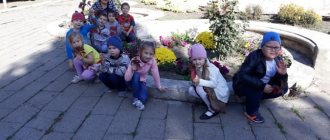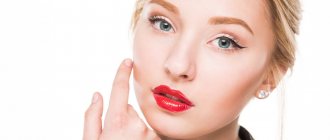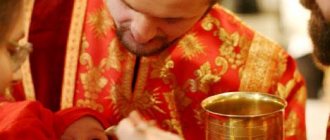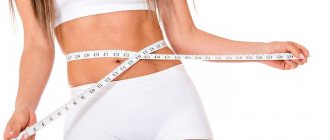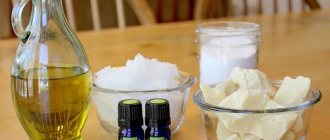Classification of asanas
Yoga positions are conventionally divided into several groups:
- Balance asanas. They are designed to strengthen the muscles of the legs and arms, restore tone to the abdominal muscles, reduce fat deposits,
- Asanas for twisting and stretching the collar area. They activate the nervous and endocrine systems, improve blood circulation in the brain, relieve muscle tension in the shoulder girdle,
- Asanas for twisting and stretching the spine. Relieve fatigue, improve the functioning of the digestive tract, reproductive system, straighten the spine,
- Inverted asanas. Promotes saturation of the brain with oxygen due to the flow of blood, relieves chronic fatigue, clears consciousness,
- Combined asanas. They affect different areas of the body and organism.
In the description of implementation, you can often find two implementation options: simple and complex.
Beginners are recommended to start mastering yoga with a simplified version, and as they get used to and master it, move on to enhanced performance.
For a solo session, you will only need a yoga mat. Exercises are best done in a room with good ventilation and free access to fresh air.
Asanas for self-practice
Warm-up complex
Classes should begin with warming up the muscles. The sun worship complex, consisting of 12 poses, is most often used. But there is a simpler warming option.
Start with mountain pose. Samasthiti is performed with the feet brought together. The knees, calf and thigh muscles become tense. Then you should tense the muscles of the abdomen, back, and neck. Hands can be lowered or raised, folded in prayer mudra. Breathing remains deep and even. Leave for about a minute. It is especially good to perform the exercise in the morning: it helps to awaken the body. Strengthens the asana and abdominal muscles, improves posture. Recommended for stooping, frequent numbness of the feet, and arthritis. Contraindications: headaches, insomnia, bulimia, hypotension.
Prasarita Padottanasana is performed with the legs spread out to the sides as far as possible. Hands are placed on hips. The straight back slowly moves forward, and the hands move to the floor. They should lie in line with the feet. The back is elongated by lengthening the spine. In this position, take two or three breathing cycles, after which you move your back forward and down, trying to touch the top of your head to the floor. Maintain balance and calm breathing. Leave for about 30 seconds. Another, more complex version of the asana: in a bending position, slowly raise your arms, moving your palms to your waist. With the next exhalation, move them behind your back, stretch them up and interlace your fingers. The asana allows you to feel a surge of vigor, relieves lumbar pain, promotes weight loss and relief from depression. Recommended for headaches and poor joint mobility. Contraindications: diseases of the lower back.
Urdhva Mukha Svanasana is performed lying on the stomach. The arms are bent, palms resting under the shoulders. The emphasis is on the hands. At the entrance, the head slowly rises, the top of the head stretches upward. It is followed by a body with an arch in the back. As you exhale, the pelvis rises. The feet remain pressed to the floor. Stay in the pose for 1 minute. A more difficult option involves opening the chest. To do this, the shoulders are pulled back, connecting the shoulder blades as much as possible. Your arms should remain straight. Regular practice of the asana has a beneficial effect on the spine, increases lung capacity and improves heart function. Do not perform the exercise if you have back injuries, headaches or during pregnancy.
Exercises from a lying position
Shalabhasana improves the functioning of the digestive system, strengthens the back muscles, and increases the flexibility of the spine. It also strengthens the bladder muscles and activates the prostate gland. To perform this you need to lie on your stomach. The arms are extended along the body, but do not touch the floor. As you exhale, the head, chest and legs rise, and the muscles of the buttocks tense. When done correctly, the ribs and palms do not touch the floor surface. The maximum holding time is not limited, and the minimum depends on personal preparation. You need to maintain the position for as long as your strength allows. A lighter version involves raising your legs. Both the holding time and the elevation angle gradually increase. At first, you are allowed to bend your knees. In this position, the arms are pulled back and the body is raised.
Contraindications for use include headaches, back injuries, fever, hernia and pregnancy.
Sarpasana is also performed from a prone position. Fingers need to be intertwined and placed on the buttocks. The muscles of the lower back are the first to tighten. The chest rises as high as preparation allows. The arms are raised and held at the highest possible height. Hold for as long as possible, maintaining deep breathing. It is not recommended to perform the asana if you have high blood pressure or heart disease.
Exercises from a sitting position
Baddha Konasana is performed with a straight back and legs. The knees are pressed on the inside to the floor. Slowly bend your legs, pulling your feet towards the groin area. Use your fingers to grab your feet and pull your heels toward your perineum. Lower your hips and press your knees to the mat. Pull your elbows back. The stomach is pulled towards the chest, the shoulders are straightened. The back stretches up, straight. Beginner practitioners are recommended to maintain at least 30 seconds in the asana. Gradually the time increases. When doing this, you should not bend your back, raise your shoulders or put pressure on your hips with your hands. You can place a folded blanket under your hips - this will make the asana easier. And to relieve the load from your back, you can lean against the wall. There are no contraindications, but performing it on your own for injuries to the groin area is not recommended.
Janu Sirsasana helps with headaches, relieves fatigue, symptoms of depression and relieves digestive problems. Contraindications: diarrhea and asthma. The asana is performed as follows: sit upright, back straight. Straighten your legs, press your knees with the inside to the floor surface. Palms are placed on the floor next to the buttocks. The left heel is brought to the perineum, and the left knee is moved as far back as possible. The right leg remains extended. The body slowly turns towards the right leg. Hands clasp the shin, the back is stretched up and forward. The stomach rests on the right thigh. The palms clasp the right foot. In this position, two breathing cycles are performed, after which the back is raised and pulled forward again. We need to try to move further by lengthening the spine. The forehead should touch the knee. Hold for about 30 seconds, controlling your breathing.
Crunching exercises
Asana Marichiasana IV improves the functioning of the spleen and liver, helps with curvature of the spine and salt deposits in the shoulder joints. It is contraindicated in case of exacerbation of any chronic diseases and injuries of the lumbar back. The starting position for the exercise is sitting on your buttocks. Legs are straight, pressed tightly to the floor. The lower back is slightly arched. The palms rest on the floor next to the buttocks. The left leg is bent at the knee, the foot is pulled as close as possible to the perineum. As you exhale, the body turns to the left, and the right shoulder moves behind the left thigh. The right leg is bent, the heel is pressed to the navel. Exhale and move your body to the left as far as possible. As you inhale, the right hand clasps the knee of the left leg, and the fingers intertwine behind the back. The spine stretches upward.
Bharadvajasana is indicated for people with arthritis and osteochondrosis, displacement of the spinal discs. Contraindications for performing this exercise are spinal injuries. Performed from a sitting position on the buttocks. The legs are bent at the knees, both feet are placed to the right of the hip joint. The body stretches up and turns to the left. The right palm rests on the left thigh. As you exhale, push your hand off your hip and move your body to the left even more. The hand is placed under the knee. On the next exhalation, the left hand goes behind the back, bends at the elbow joint and grabs the right hand just above the elbow. The next exhalation - the head and neck turn to the left. Leave for at least 30 seconds. Repeat after exiting the asana with the opposite side.
Inverted Exercises
All exercises in this complex are among the most difficult asanas. You need to perform them as your body is ready, and do not strive for perfect execution the first time.
Salamba Sarvangasana is recommended for asthma and arthritis, bronchitis and breathing problems, weakened immunity and intestinal disorders, uterine displacement, frequent stress, insomnia and fatigue. You should not perform the asana if you have high blood pressure and cervical injuries, pain in the shoulders and neck, during menstruation and pregnancy, problems with the thyroid gland, as well as diseases of the liver, heart and spleen. It is most convenient to start by lying on a thick blanket so that your shoulder blades are on its edge and your head is on the floor. This will prevent neck injury. Arms extended behind head. At the exit, the knees are pulled towards the chest. Without the help of hands, only by rolling, the feet are moved behind the head. Hands are moved behind the back, elbows rest on the floor. The palms help the body take a vertical position. Legs bend at the knees and stretch upward. Maintain in position for about 3 minutes. Slowly come out of the asana, lowering your back, stretching and relaxing your legs.
Eka Pada Sarvangasana is a more complicated version of the previous asana. It has the same contraindications and indications. After performing Salambu Sarvangasana, leave the left leg vertical, and lower the right leg down behind the head. It is important to keep both legs straight and the muscles tense. The toes of the right foot should touch the floor. Maintain in the asana for up to 20 seconds. Exiting the asana begins by raising your legs up. Then the back lowers, the legs return to their original position and relax.
Cleansing
Cleansing the nasopharynx with water – Jala Neti
We are talking about Shatkarma, which is the basis for practice. It is a set of actions aimed at cleansing and creating a balance of energies. Shatkarma consists of six exercises that beginners can master, and they must be constantly repeated, which you can do on your own. It is simply necessary to note that this complex has a fairly strong effect not only on the physical state, but also on mental sensations, on thought processes and sensations. The purpose of Shatkarma is cleansing, with the help of certain techniques that mentors encourage to keep secret from others, the stomach, intestines, nasal passages, mucous membranes of the eyes, respiratory tract are cleansed, and also massage of internal organs is carried out, thereby improving metabolism.
Cleansing the nasopharynx with a thread – Sutra-neti
Shatkarmas are performed independently, as they require certain conditions that cannot be achieved during group practices. Asanas are performed jointly or individually with the teacher.
The use of six types of cleansing makes it possible to circulate energies freely and allow them to reach the right direction . In addition, without cleansing, the body’s systems cannot work in the desired mode, which prevents the achievement of set goals during practice, and also distracts from the conscious performance of asanas.

